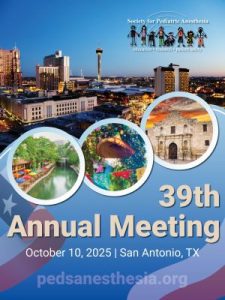{“questions”:{“ddyfl”:{“id”:”ddyfl”,”mediaType”:”image”,”answerType”:”text”,”imageCredit”:””,”image”:””,”imageId”:””,”video”:””,”imagePlaceholder”:””,”imagePlaceholderId”:””,”title”:”A three-year-old child presents to the operating room for an emergent craniotomy. The patient\u2019s medical history is unremarkable. The patient was induced with 1.2 mg\/kg of rocuronium, and paralysis was maintained with 0.1 mg\/kg\/hour of vecuronium. Vecuronium infusion was discontinued an hour before the closure. At the end of the case, Train-Of-Four (TOF) monitoring shows zero twitches even with tetanic stimulation. Which of the following drug doses is the MOST appropriate to reverse this patient?”,”desc”:””,”hint”:””,”answers”:{“26yyz”:{“id”:”26yyz”,”image”:””,”imageId”:””,”title”:”A.\tSugammadex 2 mg\/kg “},”wstcv”:{“id”:”wstcv”,”image”:””,”imageId”:””,”title”:”B.\tSugammadex 4 mg\/kg “},”jw4ya”:{“id”:”jw4ya”,”image”:””,”imageId”:””,”title”:”C.\tSugammadex 8 mg\/kg “},”tw0y8”:{“id”:”tw0y8″,”image”:””,”imageId”:””,”title”:”D.\tSugammadex 16 mg\/kg”,”isCorrect”:”1″}}}},”results”:{“whdk2”:{“id”:”whdk2″,”title”:””,”image”:””,”imageId”:””,”min”:”0″,”max”:”1″,”desc”:””,”redirect_url”:”https:\/\/pedsanesthesia.org\/wp-content\/uploads\/2025\/05\/Week-247-Suggamadex-in-Children.pdf\t”}}}
Question of the Week #246
{“questions”:{“dwrtj”:{“id”:”dwrtj”,”mediaType”:”image”,”answerType”:”text”,”imageCredit”:””,”image”:””,”imageId”:””,”video”:””,”imagePlaceholder”:””,”imagePlaceholderId”:””,”title”:”You are designing a study to look at the effect of tranexamic acid administration on intra-operative hemorrhage in high-risk scoliosis patients undergoing posterior spinal fusion. You plan to randomize half of the patients to receive tranexamic acid and the other half to receive a placebo. You then plan to compare the estimated blood loss at the end of each case. Which of the statistical tests must be used to compare the study results?”,”desc”:””,”hint”:””,”answers”:{“3xxrj”:{“id”:”3xxrj”,”image”:””,”imageId”:””,”title”:”A.\tPaired t-test”},”lhchu”:{“id”:”lhchu”,”image”:””,”imageId”:””,”title”:”B.\tChi-square test”},”a7ver”:{“id”:”a7ver”,”image”:””,”imageId”:””,”title”:”C.\tUnpaired t-test”,”isCorrect”:”1″},”epxbh”:{“id”:”epxbh”,”image”:””,”imageId”:””,”title”:”D.\tANOVA”}}}},”results”:{“80mbn”:{“id”:”80mbn”,”title”:””,”image”:””,”imageId”:””,”min”:”0″,”max”:”1″,”desc”:””,”redirect_url”:”https:\/\/pedsanesthesia.org\/wp-content\/uploads\/2025\/05\/Week-246-Statistics-Unpaired-T-Test.pdf”}}}
Question of the Week #245
{“questions”:{“ni18n”:{“id”:”ni18n”,”mediaType”:”image”,”answerType”:”text”,”imageCredit”:””,”image”:””,”imageId”:””,”video”:””,”imagePlaceholder”:””,”imagePlaceholderId”:””,”title”:”A 6-year-old male arrives in the pediatric Emergency Department following a trampoline accident with suspected spinal cord injury (SCI). Which of the following should be included in the perioperative anesthetic management of this patient? “,”desc”:””,”hint”:””,”answers”:{“skdcv”:{“id”:”skdcv”,”image”:””,”imageId”:””,”title”:”A.\tRemove cervical collar if CT scan is negative”},”34ufd”:{“id”:”34ufd”,”image”:””,”imageId”:””,”title”:”B.\tAdminister steroids “},”jb6co”:{“id”:”jb6co”,”image”:””,”imageId”:””,”title”:”C.\tInduce mild hypothermia “},”36cju”:{“id”:”36cju”,”image”:””,”imageId”:””,”title”:”D.\tMaintain mean arterial pressures (MAP) above baseline “,”isCorrect”:”1″}}}},”results”:{“dg42q”:{“id”:”dg42q”,”title”:””,”image”:””,”imageId”:””,”min”:”0″,”max”:”1″,”desc”:””,”redirect_url”:”https:\/\/pedsanesthesia.org\/wp-content\/uploads\/2025\/05\/Week-245-Spinal-Cord-Injury.pdf”}}}
Question of the Week #244
{“questions”:{“fgefv”:{“id”:”fgefv”,”mediaType”:”image”,”answerType”:”text”,”imageCredit”:””,”image”:””,”imageId”:””,”video”:””,”imagePlaceholder”:””,”imagePlaceholderId”:””,”title”:”A 15 kg, 4-year-old girl presents for exploratory laparotomy for small bowel perforation. She is somnolent and her mother reports that she has been wetting herself even though she was previously potty-trained. Her labs include: glucose 350 mg\/dL, potassium 3 mg\/dL, bicarbonate 5 mEq\/L, and beta-hydroxybutyrate 4 mmol\/L. Administration of which of the following fluids is MOST appropriate? “,”desc”:””,”hint”:””,”answers”:{“c3zm8”:{“id”:”c3zm8″,”image”:””,”imageId”:””,”title”:”A.\t300mL bolus of 0.45% saline with dextrose “},”ue8sg”:{“id”:”ue8sg”,”image”:””,”imageId”:””,”title”:”B.\t300mL bolus of 0.9% saline “,”isCorrect”:”1″},”i3f5y”:{“id”:”i3f5y”,”image”:””,”imageId”:””,”title”:”C.\t500mL bolus of lactated ringers “},”purkq”:{“id”:”purkq”,”image”:””,”imageId”:””,”title”:”D.\t500mL bolus of 5% albumin “}}}},”results”:{“dw5bk”:{“id”:”dw5bk”,”title”:””,”image”:””,”imageId”:””,”min”:”0″,”max”:”1″,”desc”:””,”redirect_url”:”https:\/\/pedsanesthesia.org\/wp-content\/uploads\/2025\/05\/Week-244-Perioperative-Hyperglycemia.pdf”}}}
Question of the Week #243
{“questions”:{“fq52t”:{“id”:”fq52t”,”mediaType”:”image”,”answerType”:”text”,”imageCredit”:””,”image”:””,”imageId”:””,”video”:””,”imagePlaceholder”:””,”imagePlaceholderId”:””,”title”:”An otherwise healthy, term 4-week-old is diagnosed with pyloric stenosis. Electrolytes and fluids have been replenished over the previous 36 hours. Prior to the induction of anesthesia, an orogastric suction catheter is placed to remove gastric contents. The patient becomes bradycardic, and vital signs are HR 70 BPM, RR 34, SpO2<\/sub> 99%, and BP 60\/35 mmHg. What is the most appropriate initial step<\/em> in managing this patient?”,”desc”:””,”hint”:””,”answers”:{“993o0”:{“id”:”993o0″,”image”:””,”imageId”:””,”title”:”A. Administer epinephrine intravenously.”},”wvxk8″:{“id”:”wvxk8″,”image”:””,”imageId”:””,”title”:”B. Remove the triggering stimulus.”,”isCorrect”:”1″},”vwusc”:{“id”:”vwusc”,”image”:””,”imageId”:””,”title”:”C. Intubate the neonate.”},”nqxnn”:{“id”:”nqxnn”,”image”:””,”imageId”:””,”title”:”D. Begin chest compressions.”}}}},”results”:{“ckl59”:{“id”:”ckl59″,”title”:””,”image”:””,”imageId”:””,”min”:”0″,”max”:”1″,”desc”:””,”redirect_url”:”https:\/\/pedsanesthesia.org\/wp-content\/uploads\/2025\/04\/Week-243-Autonomic-Nervous-System.pdf”}}}
- « Previous Page
- 1
- …
- 3
- 4
- 5
- 6
- 7
- …
- 46
- Next Page »
